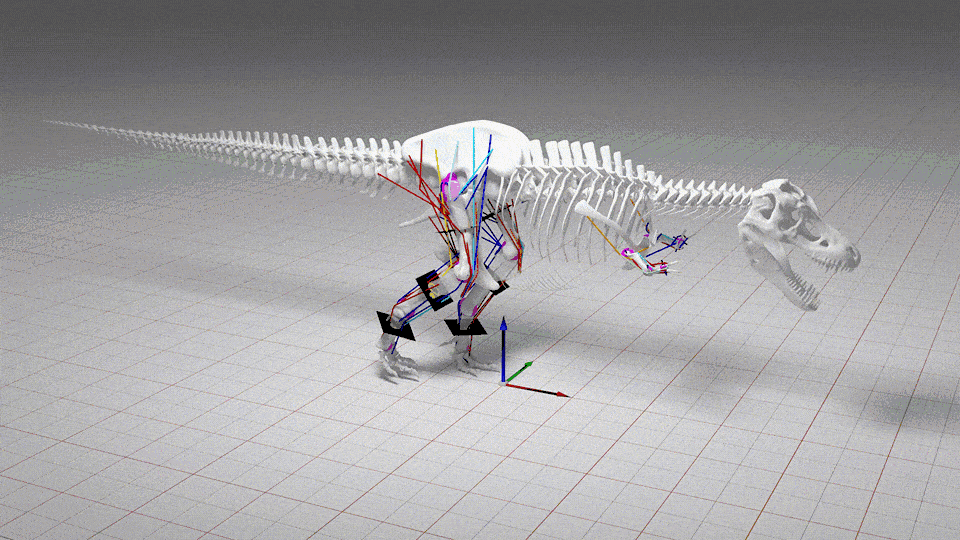Speed Demons of the Prehistoric World: Unraveling the Fastest Dinosaur Ever Recorded
Science
2025-04-28 09:00:00Content

Racing Through Prehistoric Landscapes: Uncovering the Speed Secrets of Dinosaurs
Imagine a world where massive prehistoric creatures thundered across ancient landscapes, their powerful legs propelling them at incredible speeds. Scientists have long been fascinated by the question: Just how fast could dinosaurs really run?
Paleontologists have pieced together remarkable clues about dinosaur locomotion through careful analysis of fossil evidence, footprint tracks, and advanced biomechanical studies. Some of the speediest contenders in the prehistoric world include the nimble Velociraptor and the legendary Tyrannosaurus rex.
Recent research suggests that smaller, lighter dinosaurs like the Compsognathus could have reached speeds up to 40 miles per hour - comparable to modern-day cheetahs. Larger predators like the T. rex, despite their massive size, were estimated to sprint at around 12-25 miles per hour, which would have been terrifyingly fast for their prey.
Fossil trackways provide crucial insights into dinosaur movement, revealing stride lengths and potential locomotion patterns. Advanced computer modeling and skeletal structure analysis have allowed researchers to estimate speed capabilities with increasing precision.
While we may never know the exact top speed of every dinosaur species, the ongoing research continues to paint a thrilling picture of these ancient creatures' remarkable athletic abilities. The prehistoric world was a dynamic arena of speed, survival, and prehistoric performance that continues to captivate our imagination.
Prehistoric Speed Demons: Unraveling the Velocity of Dinosaurs
The world of prehistoric creatures has long captivated human imagination, with dinosaurs standing at the forefront of scientific fascination. Beyond their massive sizes and incredible diversity, one question has persistently intrigued paleontologists and dinosaur enthusiasts alike: How fast could these ancient giants actually move?Unleashing the Secrets of Prehistoric Locomotion: A Thrilling Journey Through Time
Biomechanical Mysteries of Dinosaur Movement
Deciphering the locomotion of dinosaurs represents one of the most complex challenges in paleontological research. Scientists employ sophisticated techniques including fossil analysis, computer modeling, and comparative anatomy to reconstruct the potential movement capabilities of these extraordinary creatures. Skeletal structures, muscle attachment points, and trace fossils provide critical insights into understanding how different dinosaur species might have navigated their prehistoric environments. Researchers utilize advanced computational methods to simulate dinosaur movement, analyzing everything from bone density to muscle configuration. These intricate studies reveal that dinosaur speed was not uniform across species, with some predators potentially reaching remarkable velocities while others moved with more deliberate, calculated movements.Tracking the Speed Champions of the Prehistoric World
Among the most fascinating speed demons of the dinosaur era, the Tyrannosaurus Rex and Velociraptor stand out as prime examples of potential high-velocity predators. Biomechanical studies suggest that certain theropod dinosaurs could achieve sprint speeds comparable to modern large mammals, with some estimates ranging between 25 to 40 miles per hour. The Velociraptor, contrary to popular media representations, was a relatively small predator with remarkable agility. Fossil evidence indicates these creatures were lightweight, with specialized leg structures that would have allowed for quick, precise movements. Their skeletal anatomy suggests they were built for speed and maneuverability, potentially making them exceptional hunters in their ecosystem.Technological Innovations in Dinosaur Movement Analysis
Modern technology has revolutionized our understanding of prehistoric locomotion. Three-dimensional computer modeling, advanced motion capture techniques, and sophisticated biomechanical simulations allow researchers to create increasingly accurate representations of dinosaur movement. Machine learning algorithms now help scientists process vast amounts of fossil data, generating more nuanced interpretations of dinosaur locomotion. These technological advances enable researchers to move beyond traditional fossil analysis, creating dynamic models that simulate potential movement patterns with unprecedented precision.Environmental Factors Influencing Dinosaur Velocity
The prehistoric landscape played a crucial role in determining dinosaur movement capabilities. Terrain complexity, climate variations, and ecological dynamics all influenced the evolutionary development of locomotion strategies. Different dinosaur species adapted unique movement mechanisms based on their specific environmental challenges. Geological evidence suggests that dinosaur habitats ranged from dense forests to open plains, each presenting unique locomotion requirements. Predatory dinosaurs developed specialized movement techniques to hunt effectively, while herbivorous species evolved strategies for efficient migration and survival.Comparative Analysis with Modern Animal Locomotion
By comparing dinosaur biomechanics with contemporary animal movement patterns, scientists gain valuable insights into potential prehistoric locomotion strategies. Modern large predators like cheetahs and lions provide comparative models for understanding potential dinosaur speed and agility. Interdisciplinary research combining paleontology, biomechanics, and zoology continues to push the boundaries of our understanding, revealing increasingly sophisticated interpretations of how these magnificent creatures might have moved across prehistoric landscapes.RELATED NEWS
Science

Global Health Crisis: HIV Funding Cuts Could Trigger Devastating 3 Million Excess Deaths
2025-04-21 14:15:00
Science

Climate Crusader: UA Global Expert Reshapes Environmental Science Frontier
2025-03-10 22:25:00
Science

Beyond Textbooks: How Science Adventures Forge Tomorrow's Global Citizens
2025-04-14 12:39:23





